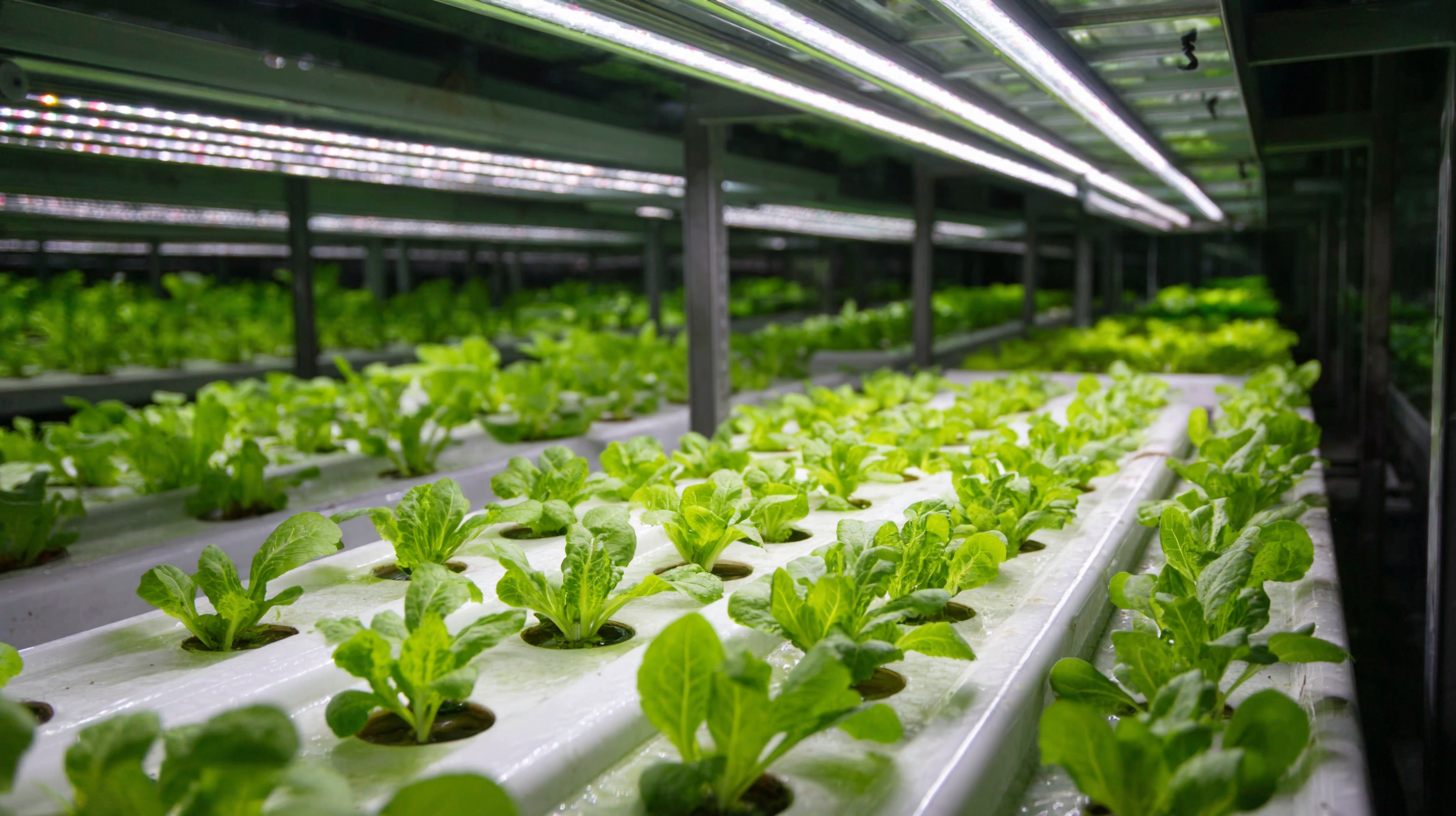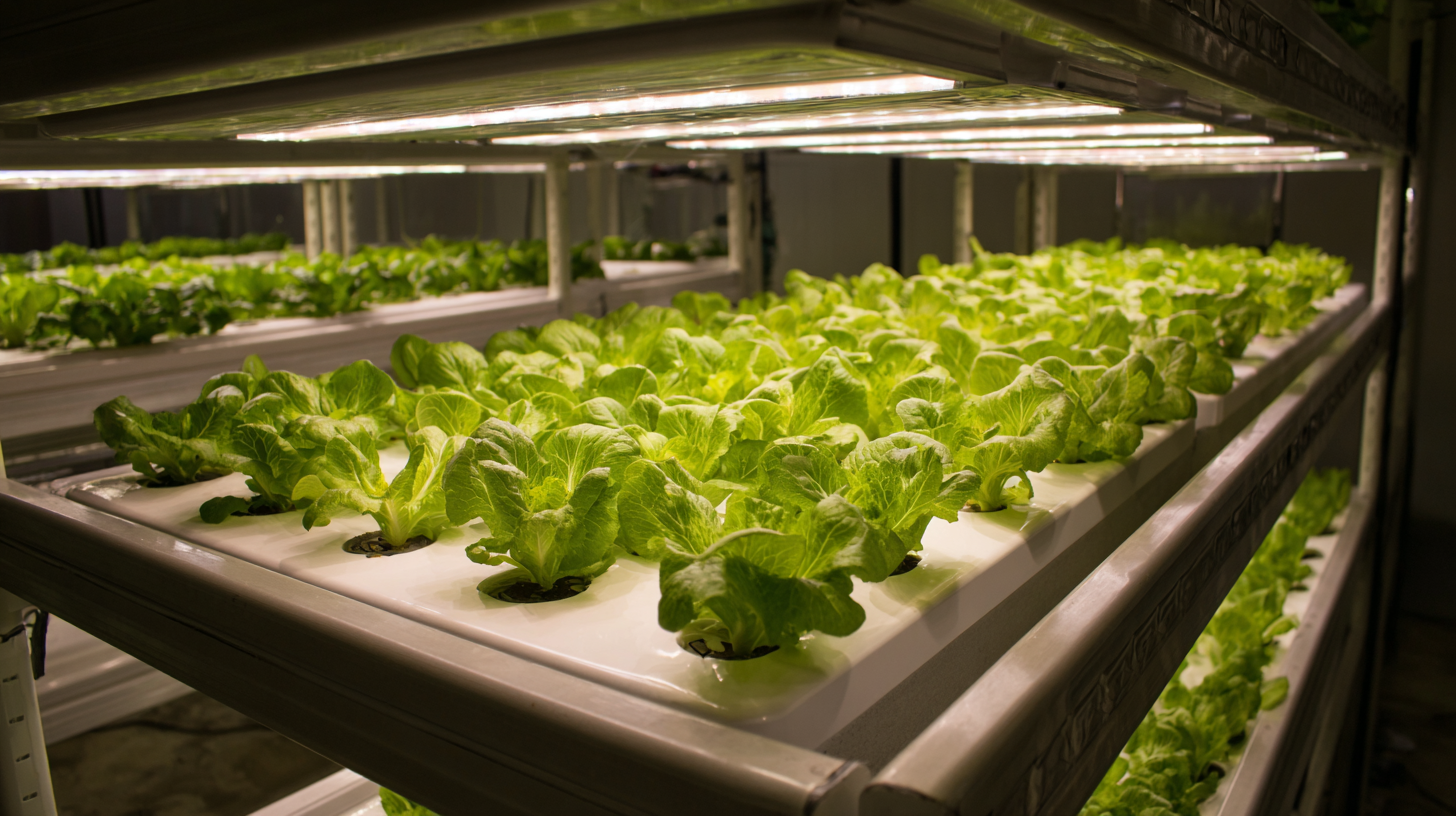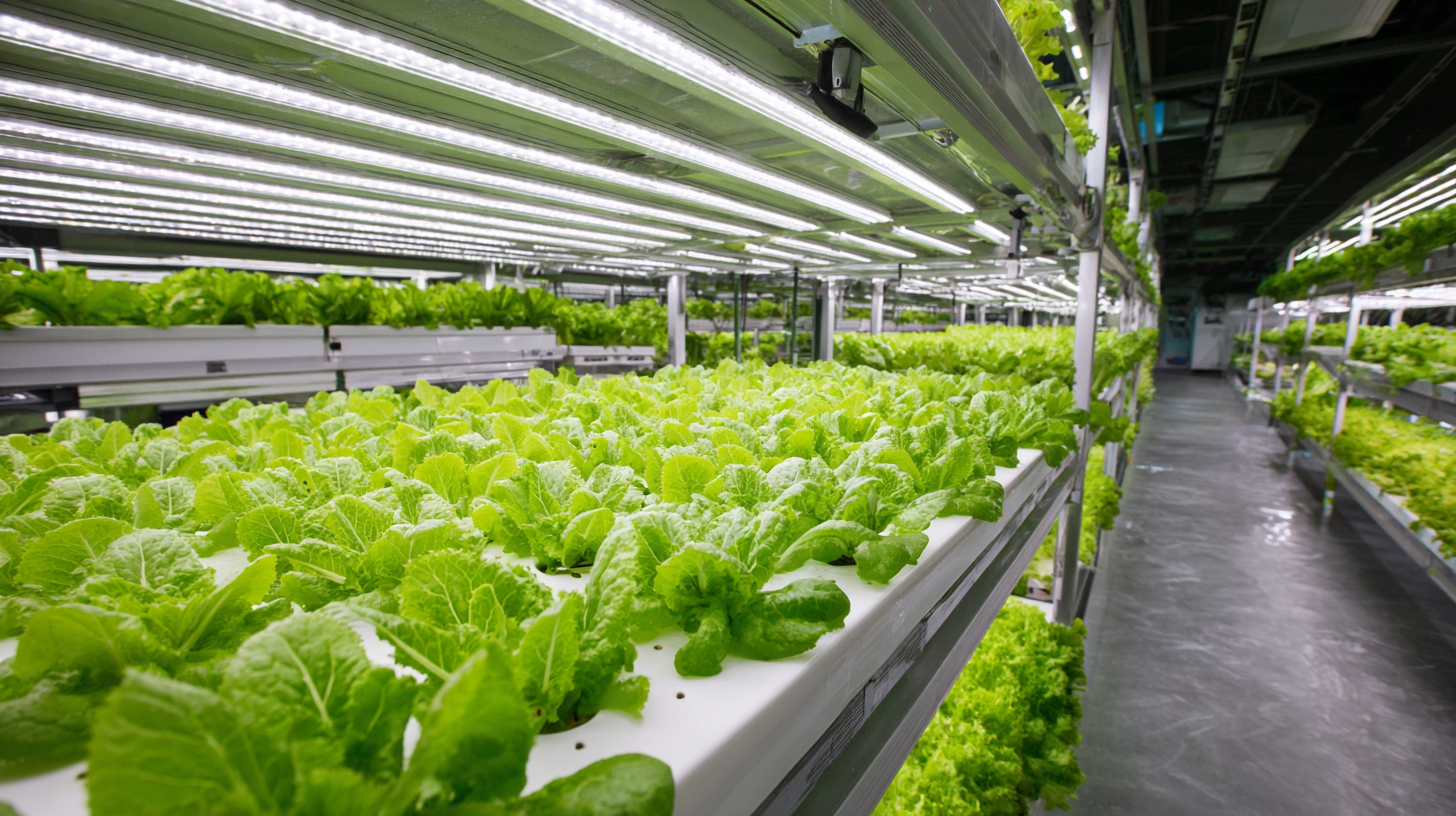
Future of Aquaponics Systems Market Trends and Projections for 2025
The Aquaponics System market is poised for significant growth over the next few years, with projections suggesting a compound annual growth rate (CAGR) of approximately 15% by 2025, driven by increasing demand for sustainable agriculture and organic food production. According to a recent report by Allied Market Research, the market value is expected to reach $1.2 billion globally, as more consumers and businesses recognize the environmental benefits and efficiency of integrated aquaponics systems. This innovative approach combines aquaculture and hydroponics, allowing for the simultaneous cultivation of fish and plants in a symbiotic environment. As the global population continues to rise and urban agriculture becomes more critical, understanding the different types of aquaponics systems available and their respective applications will be essential for stakeholders. In this blog, we will explore the characteristics of various aquaponics systems and provide guidance on how to effectively implement these systems for sustainable food production.

Benefits of Aquaponics Systems for Sustainable Agriculture
Aquaponics systems offer a revolutionary approach to sustainable agriculture, combining aquaculture (raising fish) and hydroponics (growing plants without soil) in a mutually beneficial ecosystem. This innovative farming technique not only maximizes space and resources but also significantly reduces water usage compared to traditional farming methods. The closed-loop system recycles water, ensuring that plants receive essential nutrients from fish waste while simultaneously purifying the water for aquatic life. As environmental concerns grow, the appeal of aquaponics systems becomes increasingly evident.
Tips for starting your own aquaponics system: Begin by selecting the right fish species that can thrive in your local climate while being compatible with the plants you wish to grow. Popular choices include tilapia, catfish, and trout for fish, alongside leafy greens and herbs for plants. Moreover, maintaining optimal water quality is crucial; use a reliable testing kit to monitor pH, ammonia, nitrite, and nitrate levels. Regularly checking these parameters ensures a healthy ecosystem where both fish and plants can flourish.
Another advantage of aquaponics is its ability to produce food closer to urban areas, reducing transportation costs and carbon footprints. When establishing your system, consider utilizing vertical farming techniques to maximize space efficiency, especially in limited areas. This not only increases your yield but also supports urban agriculture initiatives that promote local food security and sustainability.
Future of Aquaponics Systems Market Trends and Projections for 2025
| Year | Market Size (USD Billion) | Growth Rate (%) | Key Benefits |
|---|---|---|---|
| 2021 | 1.2 | 8.5 | Resource Efficiency |
| 2022 | 1.5 | 10.0 | Sustainable Practices |
| 2023 | 1.8 | 12.0 | Increased Yield |
| 2024 | 2.1 | 15.0 | Eco-Friendliness |
| 2025 | 2.5 | 18.0 | Water Conservation |
Economic Advantages of Implementing Aquaponics in Urban Areas
As urban populations continue to grow, the implementation of aquaponics systems presents significant economic advantages for city environments. By integrating fish farming with plant cultivation, aquaponics not only maximizes space but also minimizes resource use, which is vital in densely populated areas. This dual-farming approach allows for efficient recycling of nutrients, reducing the overall cost of production while promoting local food security. The ability to produce fresh produce and fish within urban settings mitigates the reliance on extensive food supply chains, thus decreasing transportation costs and carbon emissions.
Moreover, the adoption of aquaponics can stimulate local economies. By creating jobs in urban agriculture, aquaponics systems can enhance community involvement and foster a sustainable industry. As cities focus on building resilience against climate change and food shortages, the economic benefits are twofold: enhancing food access and providing financial opportunities for urban dwellers. Additionally, as evidenced by recent studies, aquaponics systems can be tailored to fit urban architecture, making them a promising avenue for sustainable development in agriculture. This emerging industry not only addresses immediate food needs but also contributes to the economic vitality of urban areas.
Environmental Impact and Resource Efficiency of Aquaponics
Aquaponics systems, which integrate aquaculture and hydroponics, are gaining significant attention due to their potential to enhance environmental sustainability and resource efficiency. By creating a symbiotic ecosystem, these systems utilize fish waste as a nutrient source for plants, thus minimizing the need for chemical fertilizers. This closed-loop system not only reduces water consumption—often by up to 90% compared to traditional farming—but also minimizes the environmental degradation associated with conventional agriculture. As the world grapples with water scarcity and food security, aquaponics presents a promising alternative that aligns with sustainable practices.

Furthermore, the environmental impact of aquaponics extends beyond mere resource conservation. Through the cultivation of both fish and plants in a controlled environment, aquaponics can reduce carbon footprints significantly. The integration of renewable energy sources into aquaponics systems also enhances their sustainability, allowing for a clean and efficient energy supply. As market trends project substantial growth in aquaponics by 2025, stakeholders are increasingly recognizing its potential not just for food production, but also as a pivotal solution in mitigating climate change and promoting responsible resource management.
Innovative Technologies Enhancing Aquaponics Systems
The aquaponics systems market is experiencing significant transformations propelled by innovative technologies that enhance sustainability and efficiency. According to a report by MarketsandMarkets, the global aquaponics market is projected to reach $1.5 billion by 2025, growing at a CAGR of 14.4%. This steep growth is primarily driven by advancements in automation and smart farming technologies, which are streamlining the aquaponics process. For instance, the integration of IoT devices allows for real-time monitoring of nutrient levels and water quality, ensuring optimal growth conditions for both aquatic life and plants.

Furthermore, the development of vertical farming techniques within aquaponics is reshaping traditional agricultural practices. A study from ResearchAndMarkets highlights that vertical aquaponics can potentially increase yield by up to 10 times compared to conventional farming, while using 90% less water. This innovative approach not only maximizes space but also reduces carbon footprints associated with transportation, making it a sustainable solution for urban food production. As these technologies evolve, they are likely to play a crucial role in meeting the growing demand for organic produce and fish while minimizing environmental impact.
Future Market Opportunities and Growth Potential by 2025
The aquaponics systems market is poised for significant growth by 2025, driven by increasing consumer demand for sustainable and organic food sources. As urban populations continue to rise, the necessity for efficient food production methods becomes crucial. Aquaponics combines aquaculture and hydroponics, facilitating a closed-loop system that conserves water and maximizes space. This innovative farming technique not only supports the goal of sustainable agriculture but also addresses the challenges of food security and resource scarcity.
Investment opportunities in the aquaponics sector are expanding rapidly. As technologies improve and more entrepreneurs enter the market, the potential for profitability increases. The growing awareness of environmental issues fuels interest in eco-friendly farming practices, attracting both new and experienced investors. By 2025, we expect to see enhanced technological advancements that further streamline aquaponics systems, making them accessible and appealing to a broader audience. Thus, stakeholders in this market should be keen to explore these trends and prepare for the transformative potential this industry holds.
